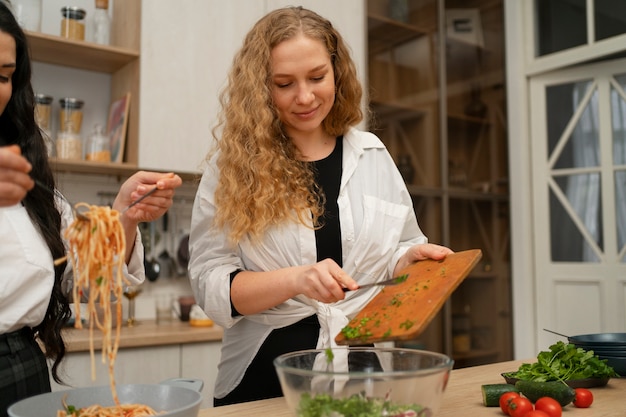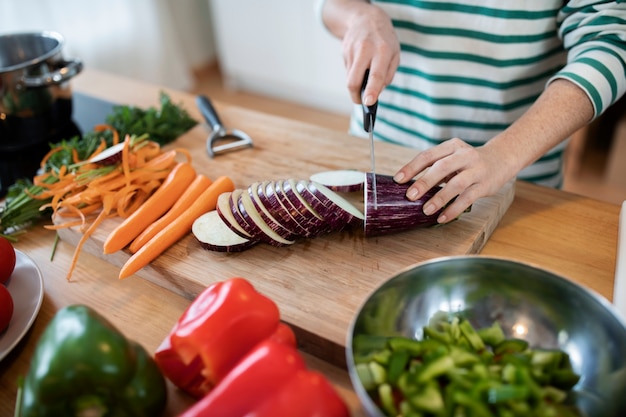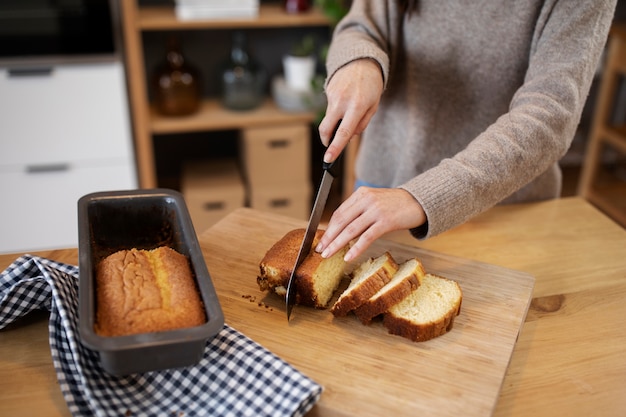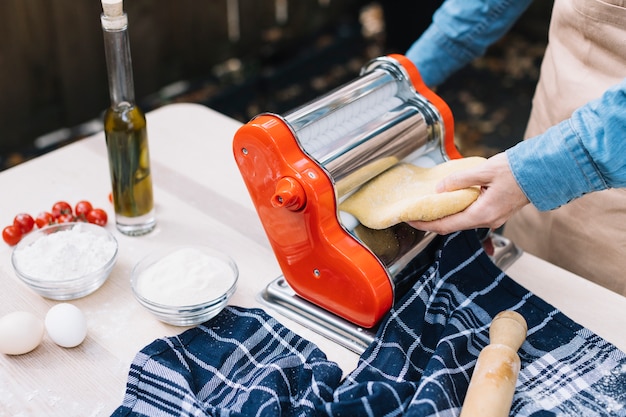You've got the recipe, the ingredients are prepped, and you're ready to tackle your next meatloaf masterpiece. But then, that age-old question pops up: "How long do I cook this thing?" You want a juicy, flavorful loaf, not a dry, crumbly mess, right? Well, fear not, my fellow meatloaf enthusiast! I've been there, done that, and learned a thing or two about getting that perfect doneness.
I've spent countless hours in the kitchen, experimenting with different recipes and techniques. Over time, I've developed a deep understanding of what makes a meatloaf truly sing. It's not just about the cooking time, it's about understanding the science behind the process.
So, grab your apron, settle in, and let's embark on this delicious journey together. We'll cover everything from the meatloaf basics to those clever tips and tricks that'll elevate your next loaf to new heights. Ready to become a meatloaf maestro? Let's dive in!
(Part 1) Meatloaf Basics: The Foundation of Flavor

Before we delve into the nitty-gritty of cooking times, let's establish a solid understanding of what makes a great meatloaf. Think of it as laying the groundwork for a truly magnificent creation.
1.1 What is Meatloaf, Anyway?
At its core, meatloaf is a molded loaf of ground meat, typically a blend of beef, pork, or a combination of both. It's then enriched with a medley of breadcrumbs, vegetables, and seasonings, all coming together to create a hearty, comforting dish.
The beauty of meatloaf lies in its versatility. You can tailor it to your taste buds, adding your favorite spices, herbs, and vegetables. A classic beefy loaf is always a crowd-pleaser, but you can also experiment with pork, lamb, or even a mix of different meats for a unique flavor profile. The possibilities are endless!
1.2 The Importance of internal temperature: Safety First
Now, here's the deal: when it comes to meatloaf, internal temperature is king. Why? Because it ensures that the meat is cooked through and safe to eat. It's not just about the time spent in the oven; it's about reaching that critical point where the meat is cooked evenly throughout.
The golden standard for meatloaf is an internal temperature of 160°F (71°C). That's where your trusty meat thermometer comes into play – your essential tool for ensuring a perfect result. Don't be shy about using it! It'll be your best friend throughout this meatloaf adventure.
(Part 2) Unraveling the Factors that Influence Cooking Time

We've established that internal temperature is the key to perfect doneness, but what actually dictates how long your meatloaf needs to cook? It's a combination of factors, and understanding them will give you a more accurate estimate of the cooking time.
2.1 Size Matters: Bigger Loaf, Longer Time
Think of it like baking a cake: a larger cake needs more time in the oven to cook through. The same principle applies to meatloaf. A bigger loaf means more meat to cook, requiring a longer cooking time to ensure it reaches that crucial internal temperature.
A standard 2-pound loaf usually takes about an hour to cook, but remember, this is just a starting point. Always refer to your recipe for specific cooking time recommendations or use a meat thermometer to determine when your loaf is truly done.
2.2 The Meat: A Matter of Leanness and Fat
The type of meat you choose for your meatloaf can significantly affect the cooking time. Leaner meats, like turkey or chicken, cook faster than their fattier counterparts, such as beef or pork.
Fat content plays a crucial role as well. A higher fat content means it takes longer for the meat to cook through. So, when selecting your meat, consider its leanness and adjust the cooking time accordingly.
2.3 The Extras: Breadcrumbs, Veggies, and More
Those delectable breadcrumbs, vegetables, and seasonings you add to your meatloaf can also influence the cooking time. A loaf packed with breadcrumbs or lots of vegetables will need a slightly longer bake than one with fewer extras.
Don't worry, these additions won't dramatically change the overall cooking time. Just keep them in mind, and if you're using a generous amount of add-ins, be prepared to add a few extra minutes to your cooking time.
(Part 3) Estimating Cooking Time: A Guide for Success

You're ready to get cooking! But how do you estimate that perfect cooking time? Let's break it down into a simple guide.
3.1 The General Rule of Thumb
As a starting point, a 2-pound meatloaf usually takes about 1 hour to cook. This is a great baseline, but remember, it's influenced by those factors we discussed earlier.
3.2 Adjusting Cooking Time for Different Sizes
If you're working with a larger or smaller loaf, you'll need to adjust the cooking time accordingly. Here's a helpful chart to guide you:
| meatloaf size (pounds) | Approximate Cooking Time (minutes) |
|---|---|
| 1-1.5 | 45-55 |
| 2 | 60 |
| 2.5-3 | 75-90 |
3.3 Checking for Doneness: The Real Test
Remember, estimated cooking times are just a starting point. Don't rely solely on the clock! It's crucial to check for doneness throughout the cooking process.
Here's how to check:
- The Meat Thermometer: Your best friend in the kitchen! Insert it into the thickest part of the meatloaf, ensuring it doesn't touch any bones. The meatloaf is done when it reaches 160°F (71°C).
- The Visual Cue: A golden brown crust is a good sign, but it doesn't necessarily mean it's cooked through.
- The Feel Test: Gently press the center of the meatloaf. It should feel firm and springy to the touch, not too soft or mushy.
(Part 4) Meatloaf Mastery: Tips and Tricks for a Stellar Loaf
You've got the basics down, you've estimated the cooking time, and you're ready to bake. But wait, there are some extra tips and tricks that can transform your meatloaf from good to absolutely glorious. Let's explore them!
4.1 Basting for Juiciness: Keeping It Moist
Basting your meatloaf during cooking is a simple yet effective way to keep it juicy and flavorful, especially when working with leaner meats. Here's how to do it:
- In a small bowl, mix together chicken broth, wine, or even just water.
- Use a basting brush or spoon to drizzle the mixture over the meatloaf every 20-30 minutes while it's baking.
- This helps keep the meatloaf moist and tender, adding a delicious depth of flavor.
4.2 Let It Rest: Unlocking Juiciness
Once your meatloaf is cooked through, resist the urge to slice it right away! Allow it to rest for at least 10-15 minutes before cutting into it. This gives the juices time to redistribute throughout the loaf, resulting in a juicier, more flavorful final product. It's a simple step that makes a world of difference!
4.3 The Power of Breadcrumbs: Moisture and Texture
Breadcrumbs are essential for both moisture and texture in meatloaf. They absorb excess moisture from the meat, creating a light and fluffy consistency.
Opt for dry breadcrumbs for the best results. If you're using fresh bread, dry it out in the oven before grinding it into crumbs. This ensures they'll absorb moisture effectively without making the loaf soggy.
4.4 Unleash Your Creativity: Flavor Experimentation
Meatloaf is a culinary blank canvas, begging for your personal touch! Experiment with different herbs, spices, and vegetables to create your own unique flavor profile. Here are some ideas to get you started:
- Savory Kick: Add chopped onions, garlic, or bell peppers for a burst of savory flavor.
- Freshness Factor: Mix in fresh herbs like parsley, thyme, or rosemary for a touch of brightness.
- Spicy Surprise: For a fiery twist, try adding chili powder, cayenne pepper, or even some chopped jalapeno peppers.
- Cheese Delight: Shredded cheddar, mozzarella, or even crumbled blue cheese can add a creamy, cheesy dimension.
(Part 5) The Art of Judging Doneness: Visuals, Touch, and the Thermometer
You've followed all the tips and tricks, your meatloaf is in the oven, but how do you know when it's truly done? It's a combination of visual cues, touch, and, of course, that trusty meat thermometer.
5.1 The Visual Cue: A Golden Brown Crust
When your meatloaf is cooked through, the surface will develop a beautiful golden brown crust. It's a sign that it's been browning nicely and suggests it's on the right track, but don't rely solely on appearance.
5.2 The Feel Test: Firm and Springy
Gently press the center of the meatloaf. It should feel firm and springy to the touch. This is another indicator of doneness, but it's not foolproof.
5.3 The Ultimate Test: The Meat Thermometer
For definitive confirmation of doneness, rely on your trusty meat thermometer. Insert it into the thickest part of the loaf, avoiding any bones. As we discussed earlier, the internal temperature should reach 160°F (71°C). This is your ultimate gauge of perfect doneness.
(Part 6) The Overcooked meatloaf: Rescue Mission
We've all been there - a little overzealous in the kitchen, and the meatloaf ends up a bit dry. But don't despair! There are ways to salvage the situation and create a delicious, flavorful meal.
6.1 The Sauce Solution: Hydration and Flavor
A good sauce can transform a dry meatloaf into a succulent dish. Try a savory gravy, a rich tomato sauce, or even a creamy mushroom sauce. The sauce adds moisture, richness, and flavor, masking any dryness and making the meatloaf more enjoyable.
6.2 Moisture Boost: Veggies to the Rescue
If you have some leftover vegetables, incorporating them into the meatloaf can help add moisture and flavor. Chop up some carrots, celery, or onions and mix them in. The vegetables will release moisture as they cook, making the meatloaf more tender and juicy.
(Part 7) Meatloaf Aftercare: Storing and Reheating
You've cooked the perfect meatloaf, it's rested, and it's ready to be devoured. But what about the leftovers?
7.1 Storing Leftovers: Keeping it Fresh
Store leftover meatloaf in an airtight container in the refrigerator for up to 3-4 days. Ensure it's cooled completely before storing to prevent bacterial growth. Use a clean container to avoid contamination.
7.2 Reheating: Bring it Back to Life
Reheat leftover meatloaf in the oven, microwave, or even in a skillet. Make sure it's heated through to 165°F (74°C) before serving to ensure food safety.
7.3 Meatloaf Transformations: Leftover Magic
Don't let leftover meatloaf go to waste! It's a blank slate for culinary creativity. Transform it into delicious dishes like meatloaf sandwiches, meatloaf hash, or even meatloaf pizza. The possibilities are endless! Get creative and experiment with different ways to use up your leftovers.
(Part 8) FAQs: Meatloaf Mysteries Solved
You've learned a lot about meatloaf, but you might still have some questions. Let's address some common ones:
8.1 Can I use ground turkey or chicken instead of beef?
Absolutely! Ground turkey or chicken are great alternatives. Just keep in mind that these meats are leaner, so you might need to add a bit more fat to the mixture, like ground pork or a small amount of butter. This will help keep the meatloaf moist and flavorful.
8.2 Can I add cheese to my meatloaf?
Yes! Cheese is a fantastic addition. Experiment with shredded cheddar, mozzarella, or even crumbled blue cheese. The cheese adds a creamy, savory dimension to the meatloaf.
8.3 How do I know when my meatloaf is done?
The most reliable way to determine doneness is to use a meat thermometer. It should reach an internal temperature of 160°F (71°C) to be considered safe to eat.
8.4 Can I freeze meatloaf?
Yes, you can freeze meatloaf for up to 3 months. Wrap it tightly in plastic wrap or foil, then place it in a freezer-safe bag. Thaw it in the refrigerator overnight before reheating.
8.5 Why is my meatloaf dry?
There are a few reasons why your meatloaf might be dry:
- Too Lean: You might be using a meat blend that is too lean. Adding a small amount of ground pork can help increase moisture.
- Not Enough Moisture-Retaining Ingredients: Ensure you're adding enough breadcrumbs and vegetables. These ingredients help absorb moisture and keep the meatloaf tender.
- Overcooked: If you overcook the meatloaf, it can become dry. Use a meat thermometer to ensure it reaches the correct internal temperature and avoid overbaking.
Armed with this knowledge, you're ready to take on the world of meatloaf with confidence. Now, go forth and create a meatloaf masterpiece that will make your family and friends sing your praises! Happy baking!
Everyone is watching

Corn on the Cob: The Ultimate Guide to Perfectly Cooked Ears
Healthy MealsAh, corn on the cob. Just the name evokes images of sunny days, barbecues, and that sweet, juicy flavour that ...

Perfect Pork Roast Oven Cooking Time: A Guide to Delicious Results
Healthy MealsThere's something truly satisfying about a perfectly roasted pork. The aroma alone is enough to make your mout...

Scallops: The Ultimate Guide to Perfect Cooking
Healthy MealsAh, scallops. Those delicate, sweet, and utterly delicious morsels of the sea. They hold a special place in my...

Spaghetti Squash: The Ultimate Guide to Cooking and Serving
Healthy MealsRemember that time you saw spaghetti squash at the supermarket, looking all bumpy and strange, and thought, "W...

Salmon Cooking Times: Perfect Guide for Every Recipe
Healthy MealsLet me tell you, cooking salmon is an art form. It's all about getting that perfect balance: juicy and tender,...
